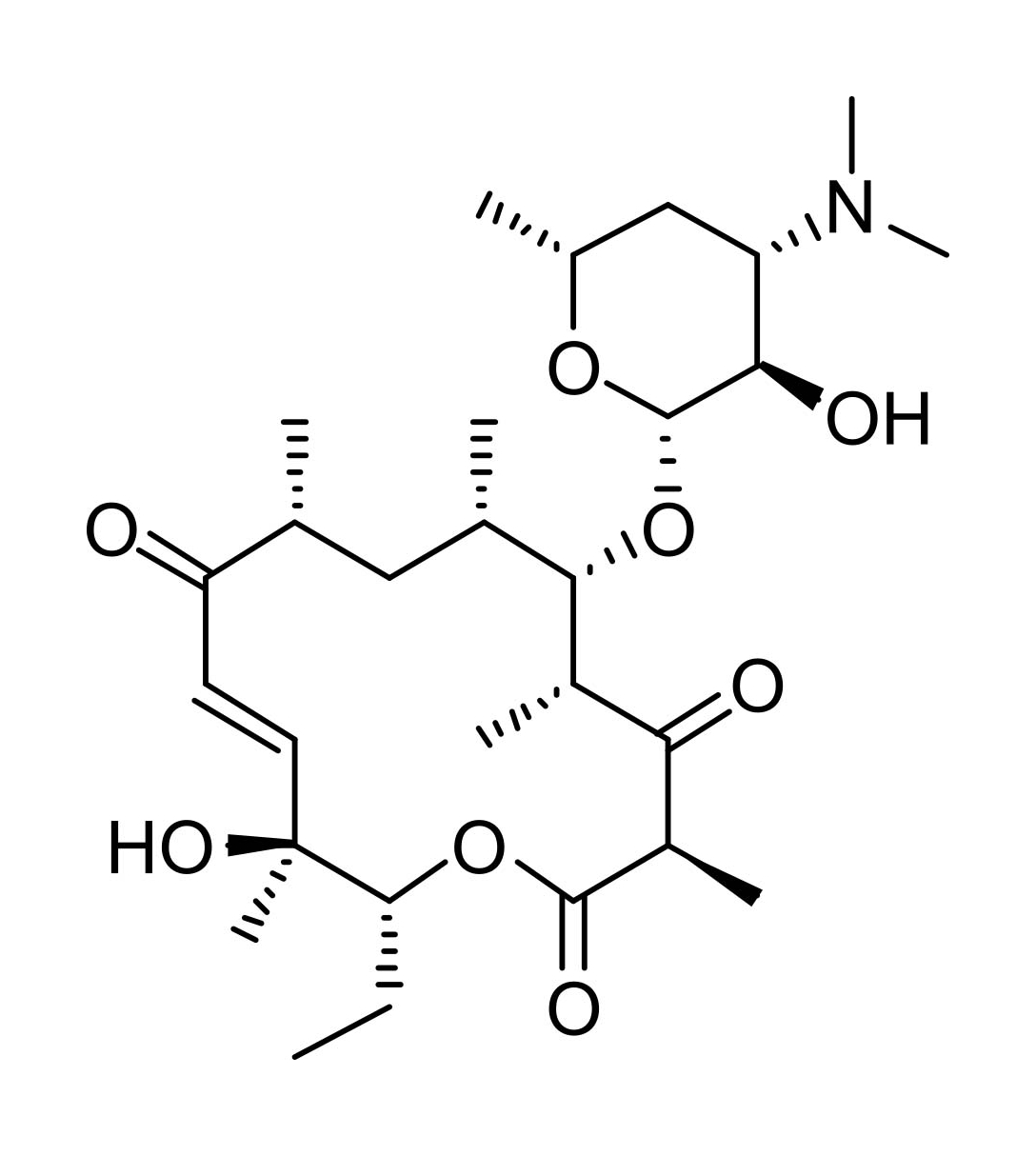Pikromycin
Application Notes
Pikromycin was the first macrolide antibiotic, isolated in 1951 by the German researchers Brockmann and co-workers from Streptomyces sp.. Its structure as a 14-membered lactone linked to D-desosamine was confirmed in 1957. Pikromycin is synthesized through a type I polyketide synthase system in Streptomyces venezuelae. Pikromycin is active against Gram positive bacteria and Mycobacteria. Pikromycin inhibits translation in bacteria by binding to overlapping sites in the ribosomal exit tunnel. Although pikromycin readily arrests the growth of bacteria, ∼40% of cellular proteins continue to be synthesized even at saturating concentrations. Pikromycin is a weak inhibitor of human prolyl endopeptidase.
References
- Pikromycin, ein bitter schmeckendes Antibioticum aus Actinomyceten (Antibiotica aus actinomyceten, VI. Mitteil. Brockmann H. & Henkel W. Chem. Ber. 1951, 84, 284.
- Biosynthesis and combinatorial biosynthesis of pikromycin-related macrolides in Streptomyces venezuelae. Xue Y. & Sherman S. Metabolic Engineering 2001, 3, 15.
- Co-produced natural ketolides methymycin and pikromycin inhibit bacterial growth by preventing synthesis of a limited number of proteins. Almutairi M.M. et al. Nucleic Acids Res. 2017, 45, 9573.



